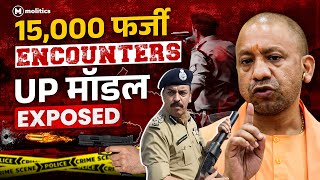Encounter Raj in UP: असली अपराधी कौन, स्क्रिप्ट कौन लिख रहा है? | Yogi Adityanath
In Uttar Pradesh, police encounters have gradually turned into a “normal” administrative practice — a routine script where the accused is taken for investigation, suddenly “attacks” the police, and is then shot dead in “self-defence.” The story never changes, only the names and dates do. But one question refuses to fade: if the accused always attacks first, why do police officers never suffer even a minor injury? Since 2017, UP has recorded over 15,000 encounter incidents with 256 deaths, yet only a handful show evidence of real crossfire. Most cases follow a chilling pattern — close-range bullet wounds, pressure on doctors to alter post-mortem findings, and victims portrayed as criminals without a fair trial. A recent Times of India report revealed how doctors are pushed to mention only “one bullet” even when bodies arrive riddled with multiple wounds. Behind these numbers are stories like Mangesh Yadav and Anuj Singh, two young men with no proven criminal history, taken from their homes and later declared dead in encounters linked to a jewellery theft case. Their families insist they were not involved, and the CCTV footage police used to justify the killings doesn’t even clearly show their faces. UP Police uses coded terms like “half fry” (shoot in the leg) and “full fry” (kill), reflecting a mindset that celebrates instant justice. Surveys show that half of India’s population believes police violence is justified. Even more alarming, many police officers themselves feel that killing suspects is better than taking them to court. But when encounters become performance, when the people who die are mostly the poorest, minorities, and those with no power — is this justice or a dangerous collapse of due process? This video investigates the pattern, the politics, and the human cost behind UP’s encounter culture.































































